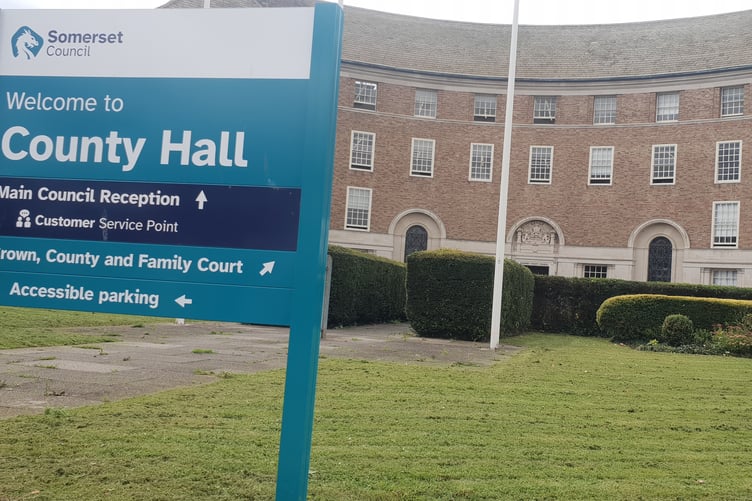A NEW local plan to protect the Wellington and West Somerset areas from inappropriate housing and other development will not be ready for at least another four years.
Somerset Council is legally required to have planning policies covering where new homes can be built and which sites should be protected.
It would allocate sites across the area for new housing, employment growth, protected green spaces, and necessary amenities such as new schools, GP surgeries, railway stations, and village halls.
But the authority has admitted it will not have a new plan in place until 2028 at the earliest.
It inherited local plans from Somerset’s four district councils when the new unitary council officially replaced them on April 1, and those policies can still be used to decide planning decisions.
But a brand new plan which could see new housing sites allocated or existing ones removed will not see the light of day for at least another four years, due to the amount of work involved and outstanding legal issues.
The former Somerset West and Taunton Council (SWT) had started to draw up a new plan, until the unitary concept was announced and its ruling Liberal Democrat administration then decided to abandon the review for the new council to take it on.
The decision has left a ‘planning policy gap’ in Somerset which developers have been trying to exploit by arguing that almost anything goes while existing policies are out of date and new ones are yet to be adopted.
Although existing plans remain in force, some parts may be given less weight if the relevant former district cannot demonstrate a five-year land supply – which SWT could not.
It means sizeable developments around the Wellington area in particular could be approved despite conflicting with other planning policies, because the council has to meet housing need.
Only Exmoor National Park, which has its own local plan, will not be included when the new planning policies are drawn up.
A timetable for the new Somerset Local Plan was published ahead of a meeting of the council’s climate and place scrutiny committee held in Yeovil.
Under law, the council must have it in place by April 1, 2028, five years after its official ‘vesting day’, or first day of operation.
The council’s planning team began initial evidence gathering in April and has created a ‘statement of community involvement’ which lays out how residents and relevant organisations will be consulted in putting the plan together.
‘Internal and external stakeholders’ will be consulted until February, 2025, with the draft local plan going out to public consultation between April and June, 2025.
Feedback from consultation will then be incorporated, and a final draft will be published in October, 2026, before being submitted to the Planning Inspectorate after more feedback, by March, 2027.
The appointed inspector will then have until February, 2028, to review the plan, with the possibility of public hearings being held to allow residents to make their case for any final modifications.
The inspector will publish their final report with any modifications in February, 2028, meaning the new local plan can finally be approved by the council and become legally binding before the end of March, 2028.
Part of the delay in producing the new plan results from a successful judicial review which forced five sites to be removed in the former Mendip district.
The council has until next March to provide alternatives to the five sites capable of delivering about 505 new homes by 2029.
Additional delays could also be caused by the next General Election, which has to be held at the latest by January, 2025, and proposed changes to planning laws being considered as part of the Government’s long-awaited Levelling Up and Regeneration Bill.
In a bid to speed up the process, the council will internally review both its mineral plan and its waste core strategy by next April and will only go out to external consultation on these elements if they are no longer deemed to be ‘effective’ in meeting the county’s needs.
Somerset Cllr Alan Bradford said drastic reform was needed to streamline the planning process, allowing small-scale applications to be approved quickly.
Cllr Bradford said: “From the time someone applies for planning consent to the time they get it might take two-and-a-half to three years.
“In that period of time, the amount it will cost is totally thrown out of the window, it takes too long. There are too many surveys.
“With local parish and town councils, people get on their planning committees to try and stop a bit of planning.
“They can be a damn nuisance, they are sometimes, but they are well-informed and they hold the procedure up.
“Bat surveys are a hell of a cost for a development and it takes quite a long time.
“It needs to be looked at if you want houses to be built quicker.”
Cllr Mike Stanton, who is currently chairman of the Somerset Rivers Authority, said potential flood risk had to be taken into account when allocating sites in light of recent extreme weather events.
He said: “Sedgemoor has approved lots of new development, but a lot of it is on the floodplain, and that depends a bit on whether the Bridgwater tidal barrier gets built, works, and lasts long enough.
“I have spent a lot of time, especially since January’s near-flood event, listening to people who were at risk simply because their houses were built where they really should not have been built.
“We need to look at that aspect of planning and stop building houses on the floodplain.”





Comments
This article has no comments yet. Be the first to leave a comment.